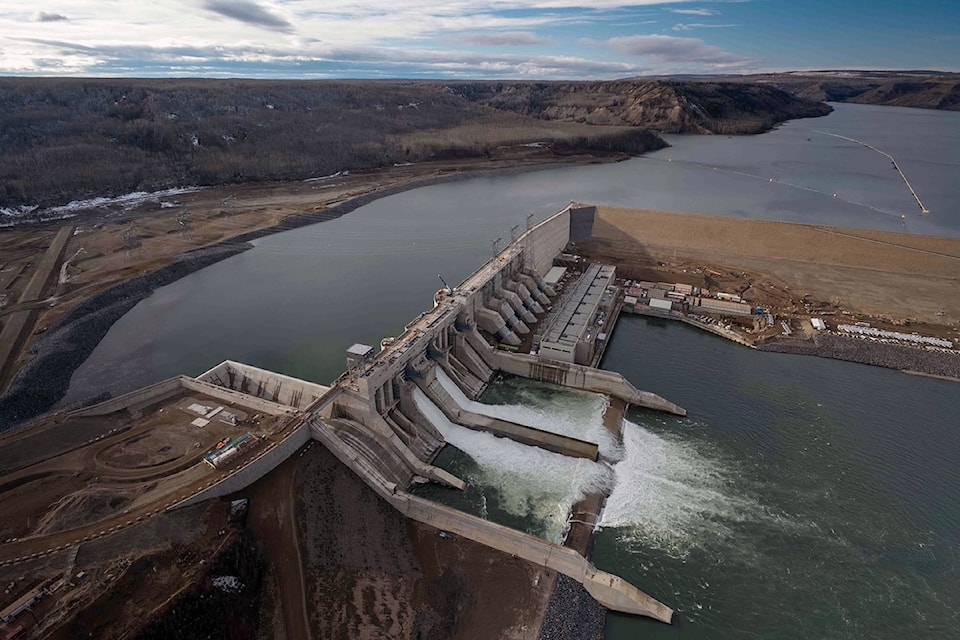BC Hydro announced on Saturday (Aug. 9) that the Site C dam is fully operational after its sixth and final generating unit was brought online.
Energy and Climate Solutions Minister Adrian Dix called it "another step forward in securing B.C.'s clean energy future," in a news release from BC Hydro.
The dam can now provide up to 1,100 megawatts of electricity, reliably powering approximately 500,000 homes. This increases BC Hydro's total energy supply by about eight per cent.
Construction on the dam began in 2015, and the first generating unit came online in October. Remaining work to be done includes completing the construction of the powerhouse and generating station, paving access roads, backfilling the tunnels used to divert the Peace River, and revegetating the construction areas.
BC Hydro is still encouraging the public to stay away from the reservoir due to hazards such as unstable slopes and floating debris. Public boat launches will open when the shoreline and water are deemed safe. This is expected to be spring 2026 at the earliest.
The Site C dam spans the Peace River near Fort St. John. It is about 60 metres tall and stretches more than a kilometre across the river.
The dam was first proposed in the early 1980s, but the B.C. Utilities Commission turned it down. The B.C. Liberal governments of premiers Gordon Campbell and then Christy Clark resurrected the project, with final approval coming in 2014.
Despite opposition and legal challenges from some First Nations and environmental groups, who feared the loss of culturally and environmentally sensitive areas, the project went ahead. When the NDP took charge under John Horgan in 2017, he decided that, despite having previously opposed the project, it was too late to pull the plug.
��ѻ��ý�It's clear that Site C should never have been started,��ѻ��ý� Horgan said at the time. ��ѻ��ý�But to cancel it now would add billions to the province��ѻ��ý�s debt ��ѻ��ý� putting at risk our ability to deliver housing, child care, schools and hospitals across B.C. And that��ѻ��ý�s a price we��ѻ��ý�re not willing to pay.��ѻ��ý�
Site C cost about $16 billion, almost double the initial price tag.



